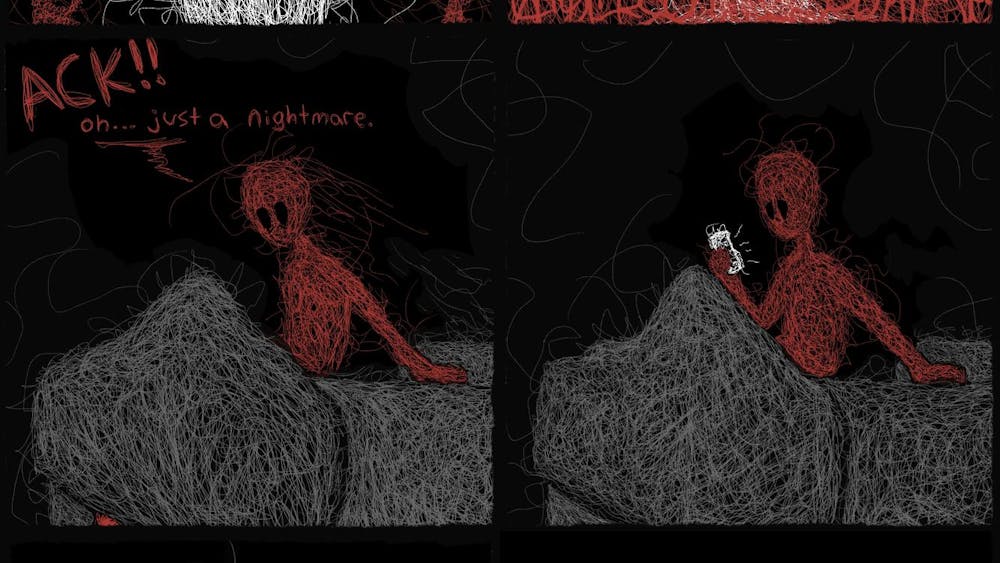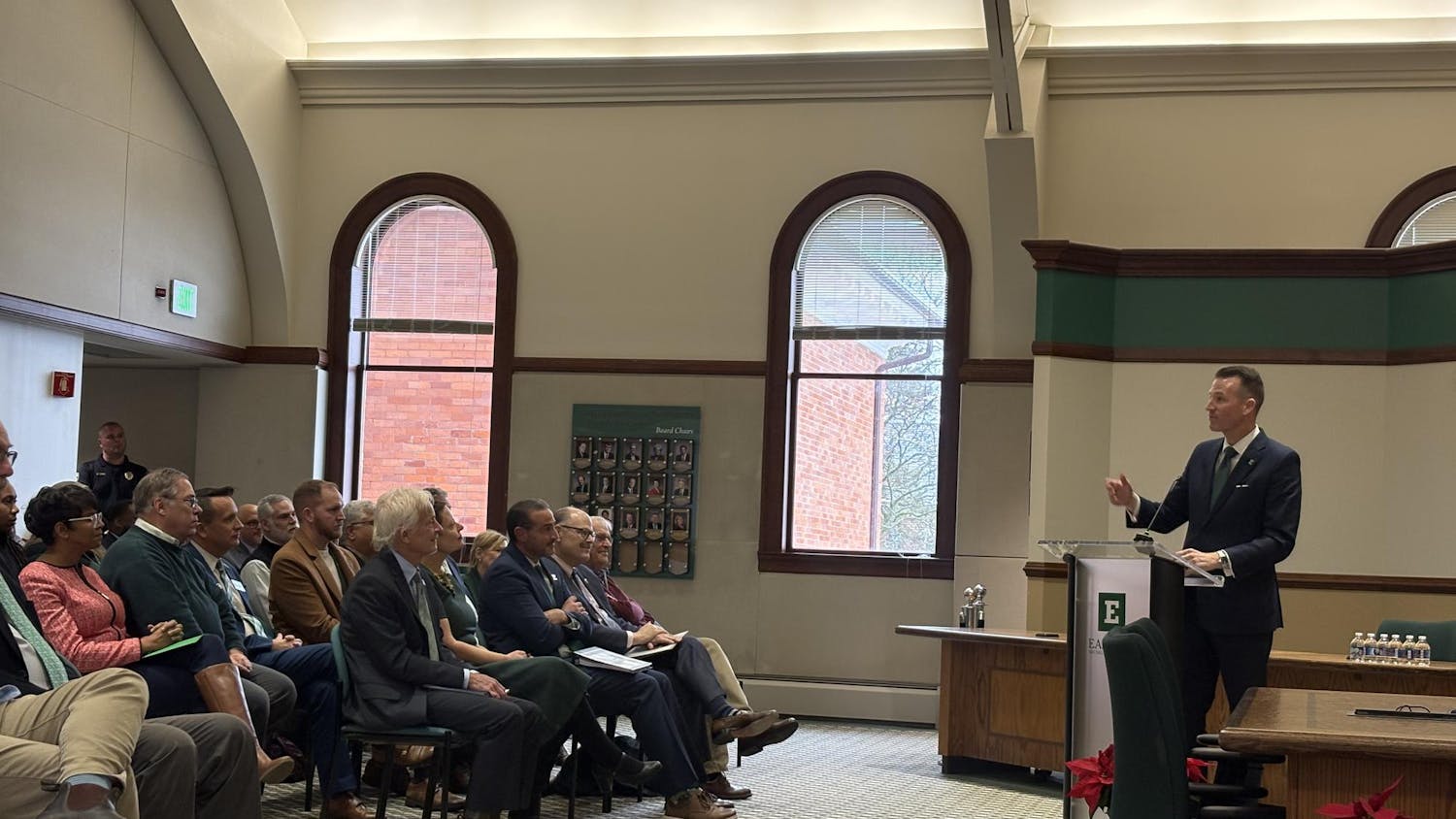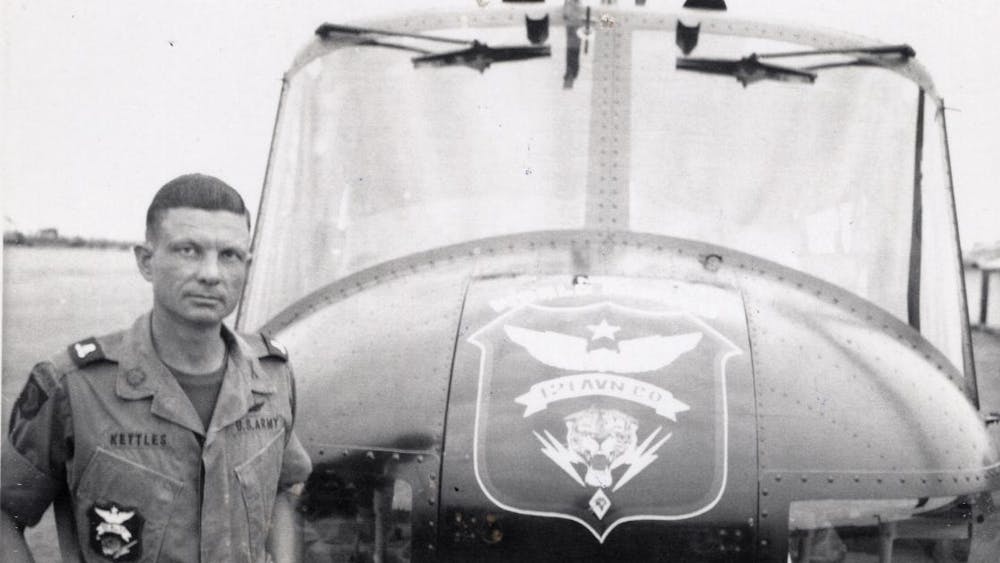One of the many benefits of attending a university with such a diverse community is the wide range of perspectives, beliefs and customs that can easily be found everywhere on campus. For a great example of this, look no further than Eastern Michigan University’s capoeira mandinga (pronounced kah-po-AY-da mahn-JING-ga) group.
“Capoeira mandinga is an Afro-Brazilian martial art that was developed in Brazil by African slaves in that area as a means to escape from their masters around the 1600s,” said the group’s president, Patrick Carroll.
The group was started on campus in the fall of 2001 by Allan Edwards, who came to EMU from Port Huron. Edwards, now the group’s instructor, had been training in capoeira for 10 to 12 years while living in Port Huron and decided to start the organization at EMU so he could continue to train in Ypsilanti. Since then, the group has grown to include roughly 20 to 30 members.
“One of the reasons [capoeira mandinga is] so unique is because there’s such a strong dance element involved,” Carroll said. “The reason for that is because, obviously, if you pretend to be a slave master for a minute you don’t really want your slaves to be escaping, so watching them practice a martial art is probably pretty worrisome.”
“The slaves figured this out pretty quickly and had to disguise their martial art as a dance. So, the modern evolution of it looks a little more like a martial art than it used to, but it still has a lot of the same flowing dance elements in it.”
While capoeira is technically a martial art, it is quite distinct compared to others like karate or judo in that it is focused more on learning and communication than winning or losing. According to Carroll, capoeira also tends to be far less aggressive than most other martial arts. Karate and judo, for example, are focused on matches or fights that have clear winners and losers. In capoeira the goal is to be unaggressive and never to intentionally hurt someone else.
“In capoeira mandinga we try … to stay away from that,” Carroll said. “Inside the game there’s no winner, there’s no loser; there’s just learning and there’s just communication. Which goes back to the dance elements of it: it’s very flowing, very circular, very intricate.”
The game is played in a circle of people, known as a Roda (pronounced hoh-dah). While two participants play the game in the center of the Roda, everyone else sings traditional songs or plays an instrument. Music is a central aspect of capoeira mandinga, and the two main instruments are African drums and the berimbau, a Brazilian stringed instrument.
“That’s what sets the rhythm, that’s what sets the tone of the game, so to speak,” Carroll said. “So we’ve got the people playing the instruments, we’ve got the people forming the circle; and it’s not like a mass of people in a circle, it’s like a ring of people in a circle — the middle is open.”
Two people enter the middle of the Roda and the game begins. Communication between the two players is crucial because they aren’t playing against each other, but rather they are trying to read each other’s movement and flow together. Through a combination of kicks, flips, jumps and cartwheels the two players revolve around one another allowing their movements to be guided by the music.
According to Carroll, more complicated maneuvers — like flips, more challenging kicks or rotating in the opposite direction as your partner — create a more complex dialogue between players, and make the entire experience more rewarding. In order to reach this more advanced stage, players must really allow themselves to be caught up by the music and the experience as a whole.
“The songs and the rhythm and the Roda dictate what sort of game is going to be played; how fast, what sort of moves are going to be more conducive to the environment,” Carroll said. “So the two people in the center will start to play a game to the music. Trying to stay bouncing with the rhythm; not trying to go super fast, not trying to show off who can do the fastest kicks or anything, but really trying to flow to the music, flow to the rhythm and flow mostly with the other person.”
Throughout the game players will take breaks, and when two players are finished they will exit the Roda and two more players will enter. When the game is finished the players with the instruments will stop playing, and it’s a tradition that everyone else will then stop all at once. Once the rhythm has stopped, the Roda ends and the game is over.
The group is open to new members, and there are no requirements for skill level, knowledge of martial arts or even fitness level in order to join. The group is a mix of skill levels, and more advanced members will help newer members to learn and improve their abilities.
“There are virtually no prerequisites. All we ask is that you have a good attitude and come expecting to learn and expecting to work hard,” said Carroll.
At the heart of capoeira mandinga is developing communication, connectivity and trust with other members. In order to have a successful game, players must be able to read one another’s body language and really be comfortable relying on one another. Because of this, group members often develop strong relationships with their training partners and with other members of the group.
“We really strive to bond as a family,” Carroll explained. “After our Thursday night classes we always go out to eat and just spend time socializing and getting to know each other. Occasionally after our other classes, we’ll have other sort of activities such as someone hosting a macaroni night in their apartment, or something like, to try to promote people getting to know each other and feeling like part of our group.”
The group meets on campus officially three times a week: Monday, Wednesday and Thursday from 7:30 to 9 p.m. in Warner Gymnasium B. The group also occasionally meets unofficially on the weekends. For more information, attend one of their meetings or visit the group at www.emustudentorgs.com. To see videos of the group performing search for “EMU Capoeira Mandinga” on YouTube.










